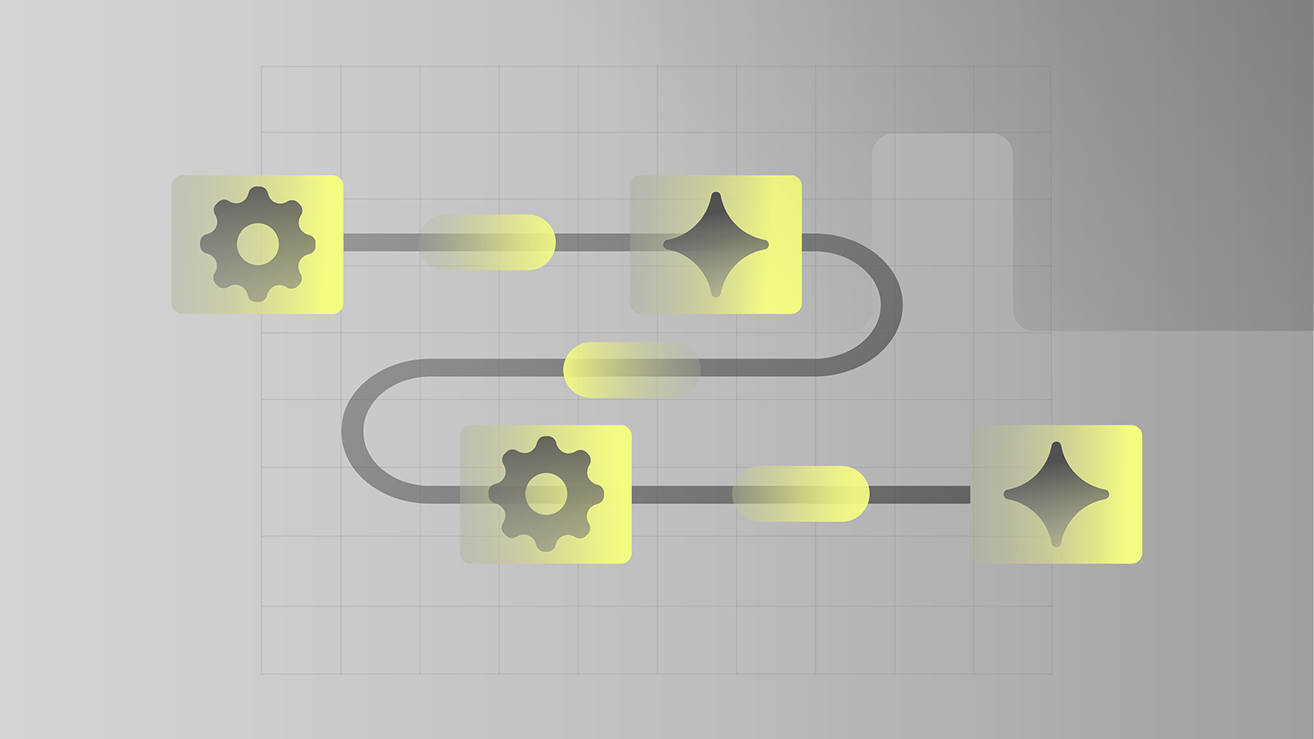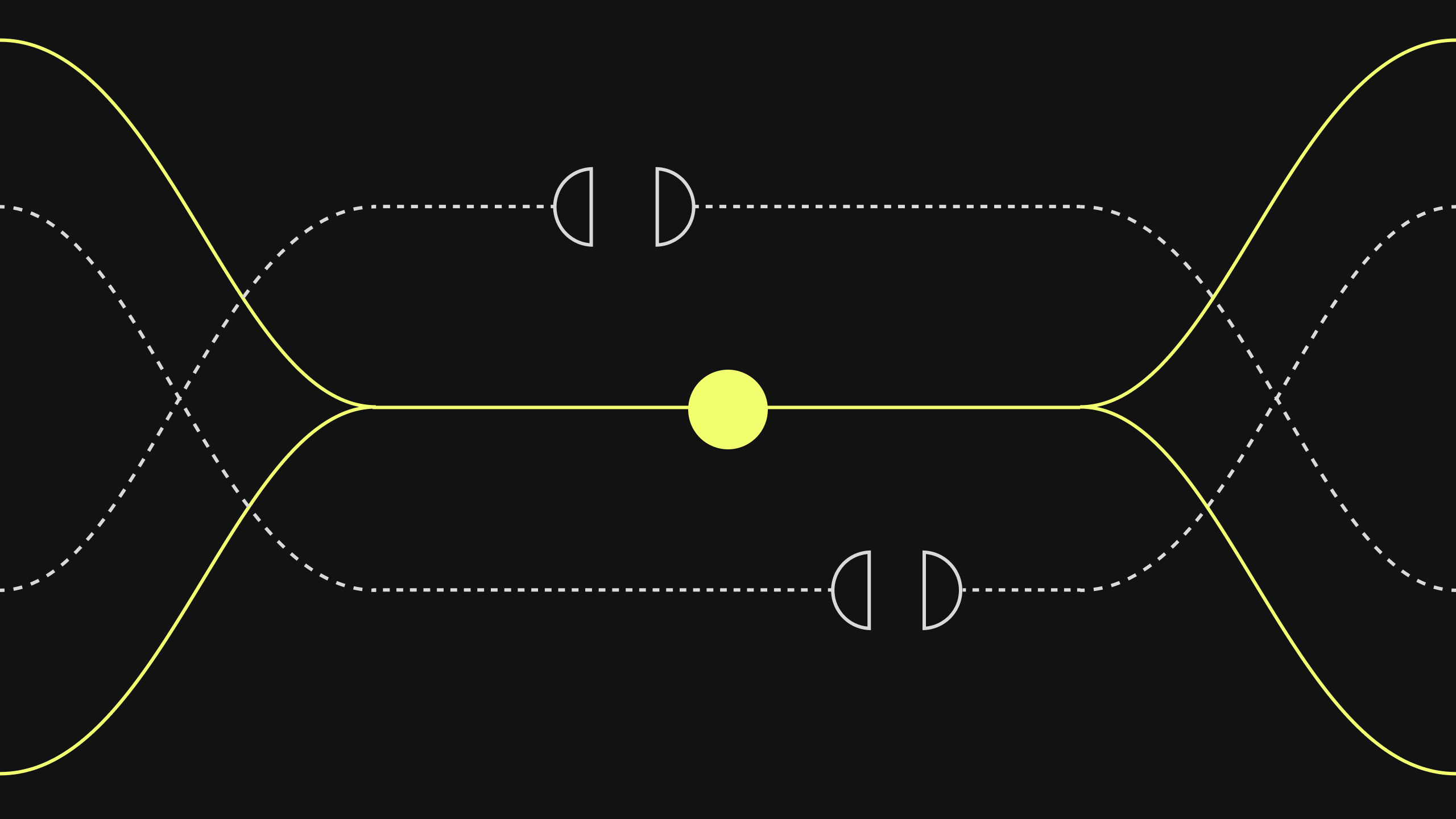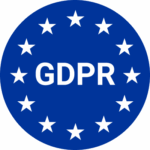
Decoding the Operational Blueprint
Achieving peak clarity and unwavering efficiency in the intricate tapestry of contemporary enterprise hinges on an profound, explicit comprehension of precisely how work unfolds. This pivotal insight is precisely where Business Process Mapping asserts its indispensable value. What is business process mapping? It represents the visual articulation of an organization’s operational sequences, meticulously delineating every step, decision nexus, and interdepartmental exchange from its initiation to its conclusion. This potent technique furnishes an unvarnished “as-is” depiction of current operations, illuminating inherent complexities, pinpointing critical bottlenecks, and, most crucially, unveiling latent automation opportunities. It serves as the foundational, indispensable initial stride for any successful business process development initiative aimed at strategic digital transformation.
This guide takes you through the foundational stages of Business Process Mapping and the subsequent, critical phases of business process development. We will elucidate how organizations can precisely identify, strategically architect, and optimally refine their internal processes. Our exploration will highlight efficacious methodologies for uncovering substantial automation opportunities, thereby ensuring every optimization endeavor yields a maximal return on investment for discerning leaders. This systematic approach forms the very bedrock of effective operations mapping.
The Foundational Pillars of Process Documentation
The creation of an accurate and impactful process map mandates a structured, rigorous methodology. A thorough understanding of the steps in process mapping is unequivocally essential for meticulously documenting workflows and establishing the precise groundwork for subsequent optimization. This methodical progression ensures both exhaustive analysis and remarkably insightful outcomes.
While specific nuances may naturally vary, the fundamental steps in process mapping typically encompass:
- Define the Operational Domain and Its Parameters: Commence by unequivocally identifying the specific process slated for mapping. Articulate its precise inception and conclusion points, its overarching objectives, and clearly delineate its inclusions and exclusions within the mapping scope.
- Identify Constituent Roles and Involved Entities: Pinpoint all individuals, teams, or automated systems actively engaged in the execution of the process. Comprehend their precise responsibilities and the nature of their interactions throughout the workflow.
- Information Elicitation and Data Gathering: Systematically collect data elucidating the process’s current operational dynamics. This involves conducting in-depth interviews with process custodians and active participants, meticulously reviewing extant documentation, and directly observing live operational execution to capture authentic nuances. This phase is crucial for detailing what are the tasks in the process.
- Granular Task Delineation: Disaggregate the process into its individual tasks in the process and sequential components. Document every action undertaken, every decision point encountered, and every handover occurring between distinct roles or integrated systems.
- Sequential Arrangement of Components: Organize the meticulously identified tasks in the process into their logical progression, explicitly including concurrent activities and divergent decision pathways.
- Visual Rendition of the Process Map: Employ standardized graphical symbols (e.g., ovals for process boundaries, rectangles for activities, diamonds for decision points) to visually articulate the workflow. This constitutes the very essence of mapping out a process.
- Stakeholder Review and Rigorous Validation: Circulate the preliminary map among all relevant process participants and key stakeholders for their critical feedback. Ensure the map faithfully mirrors the real-world process, capturing all intricate nuances and potential exceptions.
- Analytical Review and Strategic Optimization: Post-validation, meticulously analyze the map to identify inherent inefficiencies, underlying redundancies, persistent bottlenecks, manual interventions, and areas demonstrably prone to error. This analytical phase often precipitates the designing a business process for a highly optimized, future-state configuration.
These steps in process mapping collectively form the empirical bedrock for any successful process enhancement initiative.
Tasks Within the Process
At the very nucleus of every comprehensive Business Process Mapping endeavor reside the individual tasks in the process. What are the tasks in the process? These signify the discrete actions or granular activities that, when orchestrated in a specific sequence, collectively constitute the entirety of a complete workflow. Each individual task typically represents a unique unit of work, characterized by its defined inputs, resultant outputs, and the specific entity or role responsible for its execution.
A meticulous understanding of these individual tasks is unequivocally paramount for effective Business Process Mapping. These can range in complexity from straightforward data entry and fundamental document creation to intricate decision-making algorithms and sophisticated system integrations. By rigorously detailing each of the tasks in the process, organizations gain profound clarity on granular operational components, precisely identify potential friction points, and accurately pinpoint strategic junctures where intelligent automation or process redesign can yield the most significant performance enhancements. This granular comprehension is foundational for any successful business process mapping methodology.
The Strategic Dividends of Transparent Process Maps
Beyond merely serving as a visual representation, Business Process Mapping bestows a multitude of profound strategic advantages upon enterprises. Comprehending what are the benefits of process mapping? unveils its fundamental impact on fostering operational excellence, ensuring stringent compliance, and empowering agile strategic decision-making. This discipline transcends simple documentation, emerging as a potent instrument for comprehensive operations mapping.
Key strategic dividends include:
- Elevated Clarity and Shared Understanding: Meticulously crafted maps provide a universal, unambiguous perspective of operational processes, thereby eliminating ambiguity and fostering remarkably consistent execution across all organizational units. This harmonizes teams on the precise operational flow.
- Tangible Efficiency Gains: By visually highlighting critical bottlenecks, redundant tasks in the process, and unnecessary operational handoffs, process mapping enables highly targeted optimization, resulting in inherently streamlined workflows and significantly reduced cycle times.
- Substantial Cost Optimization: Precisely identifying inherent inefficiencies and intelligently automating manual, repetitive tasks in the process directly translates into markedly lower operational expenditures and a more strategic, judicious allocation of valuable human capital.
- Improved Quality and Consistent Outcomes: Systematically standardizing processes through diligent mapping ensures unwavering consistency in execution. This inherently reduces errors, leading to demonstrably higher data quality and remarkably uniform service delivery.
- Fortified Compliance and Auditability: Thoroughly documented processes furnish incontrovertible records essential for stringent regulatory adherence and meticulous internal audit purposes, proactively mitigating risks and unequivocally demonstrating robust governance.
- Streamlined Training and Onboarding: New team members can swiftly assimilate complex workflows, thereby dramatically accelerating their productive integration and significantly reducing the time and resources traditionally devoted to training initiatives.
- Empirical Foundation for Automation: Detailed process maps serve as the critical, precise blueprint for achieving successful business process transformation. They meticulously ensure that automation efforts are accurately targeted at the most impactful automation opportunities.
- Optimized Resource Deployment: Unambiguous visibility into operational workflows enables a far more judicious deployment of both human talent and technological assets, ensuring resources are utilized precisely where they generate maximum value.
These compelling dividends underscore why Business Process Mapping stands as an indispensable strategic investment for any enterprise committed to continuous improvement and sustainable growth in the digital era, consistently illuminating the path to capitalize on lucrative process automation opportunities.
The Vairous Types of Process Maps
The discipline of Business Process Mapping is rich with a diverse array of visual representations, each meticulously crafted to suit different levels of granularity or specific analytical objectives. A discerning understanding of the distinct types of process maps is crucial for selecting the most appropriate tool for a given task when actively mapping out a process.
Common types of process maps include:
- Basic Flowcharts: These are the most fundamental and widely employed type, depicting sequential steps and decision points. They are ideally suited for illustrating simple, linear processes with clear progressions.
- Swimlane Diagrams (Cross-Functional Flowcharts): These maps provide an added dimension by not only showing the sequential steps but also clearly delineating which specific department or role is responsible for each task in the process. This makes them exceptionally effective for visualizing handoffs and interdepartmental collaboration.
- Value Stream Maps: Primarily utilized within Lean methodologies, these maps analyze the comprehensive flow of materials and information indispensable for delivering a product or service to a customer. Their objective is to precisely identify waste and illuminate process automation opportunities within the entire value chain. They offer a holistic perspective for operations mapping.
- BPMN (Business Process Model and Notation) Diagrams: This represents a standardized graphical notation specifically designed for Business Process Mapping. It provides an extensive set of symbols for robustly modeling complex, end-to-end business processes, ensuring universal understanding and interoperability across organizations.
- SIPOC Diagram (Suppliers, Inputs, Process, Outputs, Customers): This is a high-level process map that succinctly defines the key elements of a process before undertaking more granular analysis. It is frequently employed in Lean Sigma methodologies to establish project scope.
- Value Chain Maps: These maps offer a high-level overview, illustrating the primary and support activities that collectively create and deliver a product or service, providing a strategic view of an organization’s core functions.
Selecting the appropriate type directly hinges upon the inherent complexity of the process and the precise objective of the Business Process Mapping exercise. Many advanced business process mapping software solutions inherently support the creation of multiple map types.
Practical Business Mapping Examples
The fundamental principles of Business Process Mapping are universally applied across a wide spectrum of industries and functional domains, consistently unlocking efficiencies and robustly driving business process transformation. These business mapping examples compellingly showcase the versatility and profound impact of structured analytical examination in revealing valuable automation opportunities.
- Financial Services: Customer Onboarding: A prominent bank might undertake a meticulous Business Process Mapping exercise for its customer onboarding sequence. This mapping effort often uncovers manual data entry into disparate systems, numerous required sign-offs, and fragmented communication handoffs. The resulting map precisely illuminates process automation opportunities for digital forms, seamless API integrations, and automated welcome sequences, thereby yielding a profoundly faster, more compliant, and enhanced onboarding experience. This exemplifies a critical application of process mapping in project management.
- Healthcare: Patient Intake Optimization: A leading hospital might engage in comprehensive operations mapping for its patient intake workflow. The resultant map frequently highlights reliance on paper forms, redundant information collection, and delays in room assignment. This analytical effort clearly identifies process automation opportunities for digital intake forms, automated data validation, and streamlined patient routing, significantly enhancing efficiency and overall patient experience.
- Manufacturing: Order-to-Cash Cycle Streamlining: A global manufacturing firm could meticulously map its entire order-to-cash process, invariably uncovering manual order validation, disconnected inventory checks across various warehouses, and manual notification procedures for shipping. This detailed mapping precisely reveals compelling process automation opportunities for automated order processing, real-time inventory updates, and integrated logistics communications. This leads to significantly faster order fulfillment and markedly improved customer satisfaction.
- Human Resources: Employee Performance Review Automation: An HR department undertaking Business Process Mapping for its employee performance review cycle might discover inconsistencies in scheduling, cumbersome manual data collection for feedback, and protracted delays in follow-up actions. The resultant map precisely illuminates automation opportunities for automated scheduling, digital feedback forms, and automated reminder systems, thereby standardizing the process and improving its efficiency.
These compelling business mapping examples powerfully underscore the universal applicability of Business Process Mapping in meticulously preparing organizations for truly impactful and strategically advantageous automation initiatives.
Modern Methodologies for Business Process Mapping
The landscape of Business Process Mapping is dynamically evolving, continuously integrating advanced approaches and leveraging powerful business process mapping software to enhance both precision and execution speed. These contemporary techniques provide a robust and adaptable business process mapping methodology for comprehensive process analysis and optimization.
Key modern methodologies and tools include:
- Traditional Manual Mapping: This approach involves conducting in-depth interviews, facilitating collaborative workshops, and engaging in direct observation to manually construct process maps. While resource-intensive, this qualitative method remains invaluable for capturing nuanced insights and understanding informal tasks in the process.
- Process Mining: This advanced business process mapping methodology utilizes sophisticated algorithms to analyze event logs automatically generated by IT systems (e.g., ERP, CRM, workflow engines). It meticulously reconstructs and visually represents the actual “as-is” process execution paths. Process mining delivers empirical, data-driven insights, precisely identifying insidious bottlenecks, detecting significant process deviations, and highlighting critical compliance gaps that manual methods might overlook. It offers a quantitative, empirical view for operations mapping.
- Task Mining: This method, akin to process mining but more granular, specifically focuses on analyzing user desktop activity. It meticulously captures individual user interactions (mouse clicks, keystrokes) to automatically uncover highly repetitive tasks in the process and pinpoint specific automation opportunities within individual workflows.
- Automated Business Process Discovery: This innovative approach leverages advanced AI and machine learning algorithms to automatically discover, map, and document processes by analyzing diverse unstructured and structured data sources (e.g., system logs, user interface interactions, communications data). This process discovery automation significantly accelerates the initial analytical phase and enhances accuracy in identifying process automation opportunities.
- Dedicated Business Process Mapping Software: Specialized software tools provide intuitive templates, standardized symbols, collaborative features, and often seamless integration with other enterprise systems. These tools streamline the steps in process mapping, making the process of designing a business process more efficient, collaborative, and easily shareable across the organization.
These synergistic approaches, when combined judiciously, furnish a powerful toolkit for comprehensive Business Process Mapping, invariably leading to the more effective and impactful identification of lucrative automation opportunities.
AI in Business Process Mapping
The integration of Artificial Intelligence is fundamentally revolutionizing Business Process Mapping, transforming it from a largely manual, often retrospective activity into a dynamic, predictive, and exceptionally efficient discipline. Is there an AI for process mapping? Unquestionably, yes. The ascendance of AI in business process mapping represents a paradigm shift, a genuine game-changer for operational excellence.
How can AI be used in business processes?
- Automated Process Discovery: AI-powered tools, often functioning as a core component of automated business process discovery or utilizing process mining techniques, possess the capability to meticulously analyze vast volumes of disparate data. This encompasses system logs, application usage patterns, employee desktop activities, and even conversational data, all to automatically discover and map existing processes. This drastically curtails the time and resources traditionally required for initial Business Process Mapping.
- Real-time Anomaly Detection: AI algorithms can continuously monitor operational data and process execution paths to identify deviations from standard workflows in real time. This capability highlights inherent inefficiencies or potential non-compliant activities that precisely indicate a need for immediate process redesign or intervention.
- Predictive Bottleneck Identification: Through sophisticated machine learning models and predictive analysis, AI can forecast future bottlenecks or anticipate performance degradation within a process. This empowers organizations to proactively optimize their operations mapping before latent issues fully materialize and cause significant disruption.
- Intelligent Automation Opportunity Identification: AI possesses the unique ability to analyze meticulously generated process maps and associated data, then intelligently suggest optimal automation opportunities. It can even recommend the most suitable automation technology (e.g., intelligent automation, specific AI tools) for highly specific tasks in the process, based on its analytical insights.
- Dynamic Process Documentation and Versioning: AI can actively ensure that process documentation remains continuously updated as operational processes naturally evolve. This guarantees that maps consistently reflect current operational realities, moving beyond static diagrams to dynamic, actionable insights crucial for effective process mapping in project management.
The pervasive integration of AI in business process mapping significantly enhances accuracy, dramatically accelerates the generation of actionable insights, and fundamentally transforms the mapping process into a continuous, intelligently adaptive activity, consistently yielding superior operational intelligence.
Revolutionizing Business Process Mapping with Kognitos
For large enterprises genuinely committed to mastering effective Business Process Mapping and driving impactful business process development, Kognitos leverages its patented natural language AI to fundamentally simplify and dramatically accelerate the entire process of mapping out a process and seamlessly translating that understanding into executable automation.
Kognitos empowers leaders across domains to precisely define and iteratively develop their processes in plain English. This groundbreaking method precisely bridges the conceptual gap between understanding a complex business process and actually creating a process that is intelligently automated. It enables users, who possess intimate, practical knowledge of their operational work, to articulate the specific tasks in the process and intricate decision logic, and Kognitos uniquely translates that direct human insight into precise, auditable, and highly reliable automation. This makes AI in business process mapping practical, intuitive, collaborative, and exceptionally effective, furnishing a unique business process mapping methodology.
Kognitos’ Transformative Impact on Business Process Mapping:
- Natural Language as the Executable Blueprint: Kognitos fundamentally redefines how you create business process maps. Instead of relying on abstract diagrams or complex code, you directly define processes in natural language. This English description inherently serves as the precise process map, which is directly executable, effectively eliminating the need for disparate mapping tools or time-consuming technical translation. This represents a profound advancement in AI in business process mapping.
- Seamless Transition from Blueprint to Automation: The natural language process definition crafted within Kognitos serves inherently as both the operational blueprint and the direct automation specification. This dramatically streamlines the development of business process automation, rendering the transition from conceptual understanding to active execution remarkably fluid and exceptionally rapid.
- AI Reasoning for Nuanced Process Understanding: Kognitos’ advanced AI reasoning actively assists in defining precisely how processes should intelligently handle real-world variations and complex exceptions directly within the natural language map. This ensures that the automated process is robust and intelligent, adeptly managing intricate tasks in the process and minimizing manual intervention, thereby significantly enhancing overall operations mapping.
- Inherent Documentation and Unparalleled Auditability: When a process is meticulously defined within Kognitos using “English as code,” the resultant automated workflow intrinsically serves as live, self-documenting, and fully auditable operational documentation. This provides unparalleled clarity and transparency into all tasks in the process and their precise execution, which is absolutely crucial for stringent compliance, robust governance, and continuous improvement, particularly relevant for process mapping in project management.
- Empowering Business Users for Direct Development: Kognitos empowers business users to directly participate in designing a business process and automating it. They can articulate their operational knowledge in intuitive English, significantly reducing reliance on specialized programmers and accelerating the development of business process automations from initial insight to precise, impactful execution.
Kognitos profoundly transforms the often-tedious and complex aspects of Business Process Mapping and business process development into an intuitive, collaborative, and exceptionally efficient undertaking, directly translating invaluable operational insights into highly impactful and consistently measurable automation results.
The Future of Business Process Mapping
Business Process Mapping transcends the role of a mere static exercise; it stands as a continuous and indispensable discipline absolutely essential for maintaining organizational agility and driving persistent improvement within the modern enterprise. As organizations increasingly adopt sophisticated business process mapping software and innovative business process mapping methods like automated business process discovery and process mining, the foundational phases of process discovery inherently become remarkably more precise and profoundly insightful. The unparalleled ability to meticulously identify, strategically design, and optimally refine core business processes with pinpoint accuracy will unequivocally define the enduring success of leading enterprises in their ongoing digital transformation journey.
Kognitos is fundamentally transforming precisely how invaluable insights derived from mapping out a process seamlessly translate into tangible, high-impact automation. By empowering businesses—including discerning Accounting, Finance, and Technology leaders—to achieve seamless process definition and the intelligent development of business process automation using its unparalleled natural language AI, Kognitos uniquely enables organizations to unlock vast process automation opportunities. This distinct approach ensures that businesses can not only precisely identify but also rapidly create business process automations that consistently drive significant return on investment and lead to profound business process transformation.
Discover the Power of Kognitos
Our clients achieved:
- 97%reduction in manual labor cost
- 10xfaster speed to value
- 99%reduction in human error
Business Process Mapping is the visual representation of an organization’s operational workflows, meticulously illustrating each step, critical decision point, and interdepartmental interaction from its initiation to its conclusion. Its primary objective is to provide an unambiguous understanding of current operational dynamics, precisely identify inherent inefficiencies, pinpoint specific bottlenecks, and reveal latent automation opportunities. It constitutes a fundamental component of a robust business process mapping methodology.
The fundamental steps in process mapping typically encompass: defining the precise scope and objectives, meticulously gathering comprehensive information, accurately mapping out a process (its current state), rigorously analyzing and identifying pain points, intelligently pinpointing promising automation candidates, meticulously assessing feasibility and quantifying potential ROI, and finally, strategically designing a business process for its optimized, future automated state. This structured approach, leveraging various business process mapping methods, ensures the realization of highly profitable process automation opportunities.
The tasks in the process refer to the discrete actions or individual steps that collectively constitute a complete business process. During Business Process Mapping, these tasks are meticulously identified, analytically assessed for their nature (e.g., manual, automated, decision-based), and thoroughly documented to understand their precise contribution to the overall workflow and to uncover potential automation opportunities.
The profound benefits of process mapping are extensive. They include dramatically enhanced operational efficiency, significant cost reduction through the elimination of waste, superior accuracy and quality in operations, a crystal-clear understanding of complex operational dynamics, optimized resource allocation, and the establishment of a robust, data-driven foundation for successful business process transformation and the precise identification of high-impact process automation opportunities. It leads to the development of a far more effective development of business process automation strategy.
Common types of process maps encompass: basic flowcharts, swimlane diagrams (delineating responsible roles), value stream maps (focusing on value creation and waste elimination), BPMN diagrams (standardized for complex processes), and SIPOC diagrams (providing high-level overviews). Each type serves a distinct purpose in mapping out a process and facilitates adherence to a comprehensive business process mapping methodology.
Yes, the integration of AI in business process mapping is a rapidly advancing frontier. AI-powered tools, often functioning as a core component of automated business process discovery or utilizing sophisticated process mining techniques, can meticulously analyze system logs, user interactions, and other data to automatically discover, accurately map, and thoroughly document existing processes. This significantly accelerates the mapping process and consistently reveals lucrative automation opportunities that might otherwise be difficult to uncover manually.
Beyond its application in Business Process Mapping, AI can be profoundly utilized in business processes for intelligent decision-making, natural language understanding, automated data extraction from diverse documents, advanced predictive analysis to anticipate operational issues, and intelligently managing exceptions. AI fundamentally renders processes smarter, more adaptive, and highly efficient, thereby significantly enhancing overall operations mapping and strategic business process management.








